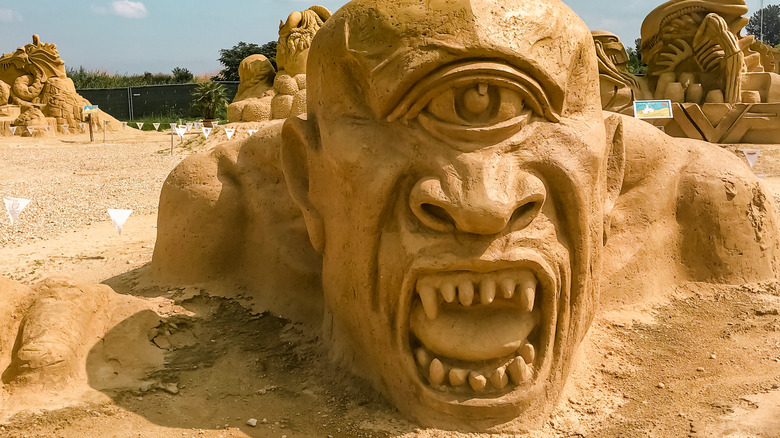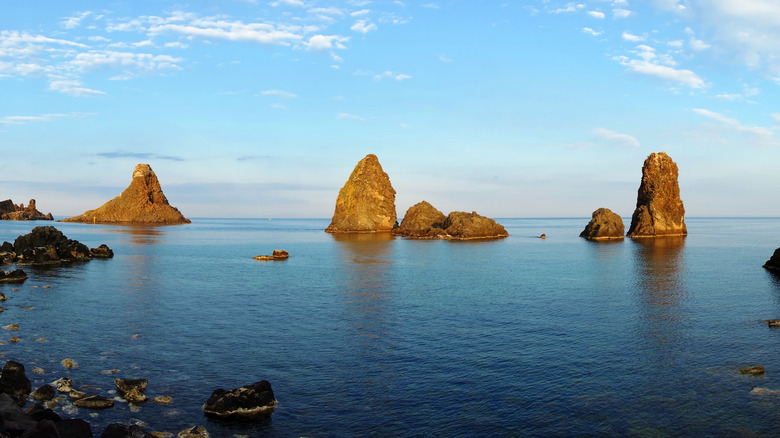Do The Cyclops Rocks From The Odyssey Really Exist?
According to Britannica, the ancient Greek epic poem by Homer called "The Odyssey" tells the story of Odysseus, King of Ithaca, and how he captured the city of Troy using the Trojan Horse before journeying back home. Over the course of about a decade, Odysseus makes many stops and has numerous adventures in and around the Aegean Sea. Because of these travels, scholars look beyond the mythic elements of the classic tale for geographic clues, seeking to determine whether any of these places could be real, and exactly how much Homer knew and understood the geography about which he wrote, per Lapham's Quarterly.
One of the most well-known parts of "The Odyssey" is when Odysseus finds himself at what are called the Cyclops Rocks, or the Rocks of the Cyclops. It's here where the hero of the story encounters a single-eyed giant named Polyphemus, who traps Odysseus and his traveling companions in his cave, from which Odysseus narrowly escapes, clutching the belly of a ram. Surely, the iconic cyclops himself is a figment of Homer's imagination or a mythological creation from the time. Do the cyclops rocks from "The Odyssey" really exist?
The Cyclops Riviera is a real place
The legend of the cyclopes is no doubt a figment of the ancient Greek imagination, perhaps inspired by blacksmiths who wore eye patches over one eye, and because of their vocation, grew quite large — a theory supported by the writing of Roman historian Pliny the Elder, who recorded the cyclopes as being the first to command iron work. Another theory being the legend of the cyclops came about when Greeks encountered dwarf elephant skulls, which look a bit like the skull of a single-eyed giant human. Birth defects from hellebore, used in Greek medicine and sometimes produces stillborn babies with cyclopia, per Forbes, is also a potential source.
Running along the eastern coast of Sicily, from Catania to Acireale, is what's called, appropriately enough, the Cyclops Riviera. The supposed cyclops rocks — volcanic cliffs, just offshore, that Polyphemus is said to have thrown at Odysseus while making his escape — are still visible today. Also, available to visitors are views of volcanic Mount Etna, said by Homer to be the home of cyclopes and what was also believed to be the home of Vulcan, god of fire, according to Smart Travel. Although cyclopes never existed as Homer described them, where his character Odysseus encountered them in one of his most well-known works is a very real place indeed.

